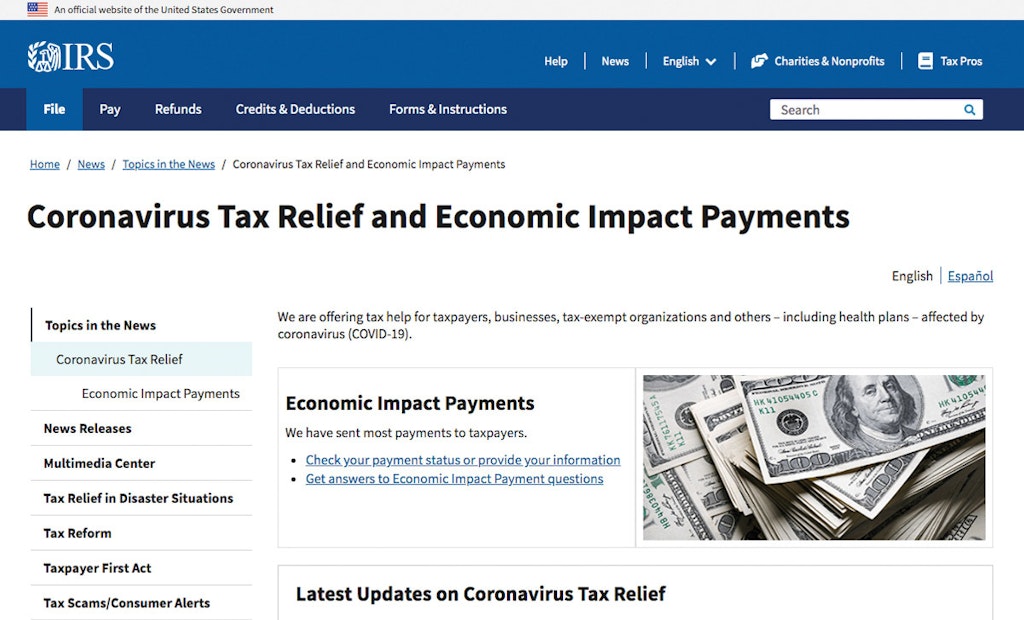Interested in Business?
Get Business articles, news and videos right in your inbox! Sign up now.
Business + Get AlertsThe coronavirus pandemic has created a challenging climate for small businesses. Financial concerns are butting up against public health interests.
With that challenge in mind, the federal government early in 2020 enacted the Families First Coronavirus Response Act. The act applies to businesses with fewer than 500 employees. It allows for employees to receive paid sick leave, while giving employers the means to handle that paid leave through tax credits.
Here’s a breakdown of how it works according to information from the U.S. Department of Labor and the IRS.
For employees
Employees can receive up to 80 hours of paid sick leave at 100% of their regular pay rate if they’re unable to work due to quarantine or they are experiencing COVID-19 symptoms and are seeking a diagnosis.
The paid leave is reduced to two-thirds of an employee’s regular wages if they’re caring for a person under quarantine, caring for a child whose school or child care provider is closed or unavailable for reasons related to COVID-19, or experiencing substantially similar conditions as specified by the U.S. Department of Health and Human Services.
If necessary, an employee unable to work due to the child care provision is also eligible for an additional 10 weeks of paid leave at two-thirds of their pay.
For the initial two weeks, part-time employees are eligible for paid leave for the average number of hours they work over a two-week period. For the additional 10 weeks allowed under the child care provision, part-time employees are eligible for paid leave for the number of hours they normally would’ve worked over that period.
For employers
To assist businesses in providing employees paid sick leave, there are two tax credits available.
With the paid sick leave credit, employers are eligible for a refund at an employee’s regular rate of pay up to $511 per day for a total of 10 days. This is for employees who are in quarantine or have COVID-19 symptoms and are seeking a diagnosis. For paid leave related to child care, employers can claim a reimbursement for two-thirds of an employee’s regular rate of pay up to $200 per day for 10 days. Employers are also entitled to an additional tax credit based on costs to maintain health insurance coverage for the employee during the leave period.
The second available credit gives employers relief for covering paid leave for workers using the additional 10 weeks provided by the child care provision. The same rate of two-thirds of an employee’s pay up to $200 per day applies, for a total cap of $10,000.
To take immediate advantage of the credits, businesses should use funds for the paid leave that they otherwise would have paid to the IRS in payroll taxes. If those don’t sufficiently cover the cost of paid leave, however, employers can request an expedited advance from the IRS by submitting a claim form.
For example, a business required to pay $5,000 in sick leave that would have had to normally deposit $8,000 in payroll taxes can instead use those tax savings to make the sick leave payments. The remaining $3,000 is all that would have to be deposited for taxes.
On the other hand, if a business has the same amount of $8,000 to deposit for payroll taxes but is paying out $10,000 in sick leave, it can use the entirety of those tax savings to cover the paid leave. The business would then have to file a claim for reimbursement on the remaining $2,000.
Other items of note
Eligible employers can claim the tax credits based on the paid leave they provided between April 1 and Dec. 31, 2020.
Businesses with fewer than 50 employees could qualify for an exemption from the paid leave requirements related to child care if those requirements would jeopardize a business’s ability to continue.
All of the paid leave amounts are also available for self-employed individuals under similar circumstances. Credits are claimed on the income tax return.
Whether a company meets the under-500-employee threshold for compliance depends on its employee count at the time the employee(s) need to take paid leave. Companies hovering around 500 need to keep careful watch. If a company is initially over 500 but later drops under and an employee still needs paid leave, it now needs to comply. However, if an employee is receiving paid leave and then the company adds to its staffing numbers putting it over 500, it does not affect that employee’s right to continue on paid leave.
Employees have a right to paid leave for the purposes of child care if their child’s school is operating under a hybrid schedule of some virtual learning and some in-person instruction. The school is deemed “closed” on those virtual learning days and an employee can receive paid leave. But if a school is fully open and the employee has elected to do virtual learning for the child after being given the choice, paid leave for child care does not apply under the Families First Coronavirus Response Act.
Employers need to retain any documentation that supports employees’ paid leave and the associated tax credits for four years.
Further guidance about the Families First Coronavirus Response Act and the related tax relief is available at www.irs.gov/coronavirus.






